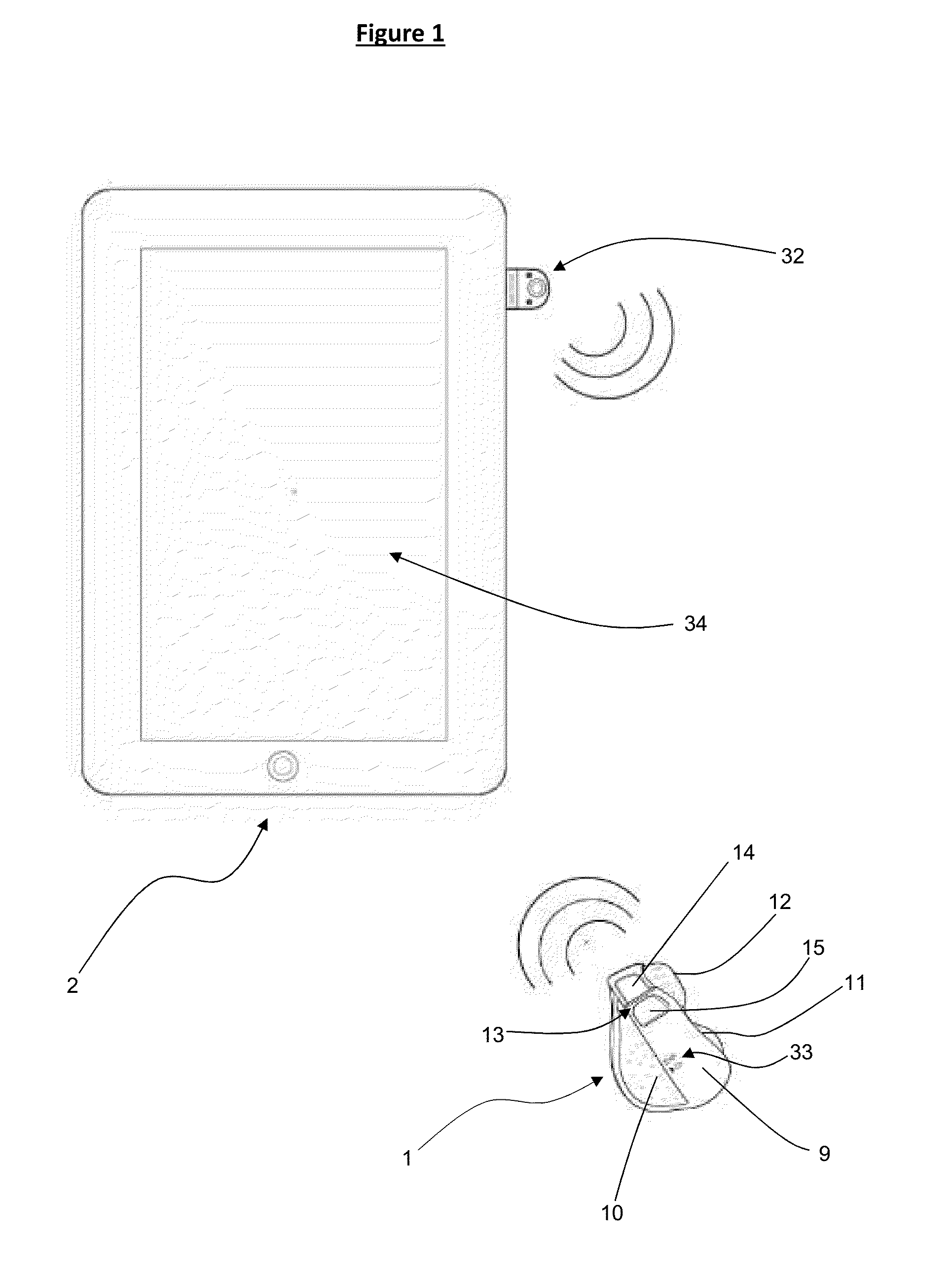Devices for use with computers
a technology for computers and devices, applied in instruments, electric digital data processing, cathode-ray tube indicators, etc., can solve the problems of frustrating users, difficult for users to benefit from intuitive touch-screen controls while using keyboard and mouse, and inefficient touch-screen keyboards
- Summary
- Abstract
- Description
- Claims
- Application Information
AI Technical Summary
Benefits of technology
Problems solved by technology
Method used
Image
Examples
first embodiment
[0278]FIGS. 12-14 show another mouse according to a preferred embodiment of the present invention. This mouse (100) is much larger (approximately 12 cm by 6 cm by 4 cm) than the first embodiment and has a more conventional palm-grip type upper body (102).
[0279]The mouse (100) also has a scroll wheel (105) and two contact sensors provided in the form of left (103) and right (104) mouse buttons. Supporting feet (108) form a base contact plane (107) and are used to support the mouse as it slides over a work surface.
[0280]The mouse (100) has a mode sensor (109) positioned to protrude downward from the base (101). An optical movement detection system (110) is provided and configured to provide a focal zone at or very close to the mode sensor (109). The optical system (110) has a similar arrangement to the first mouse embodiment (1) as shown in FIG. 9 and is capable of detecting mouse movement in both first (FIG. 13) and second (FIG. 14) orientations.
[0281]The base (101) has a right side ...
third embodiment
[0282]A mouse (200) is shown in FIGS. 15 and 16 and has the same components and general shape as the mouse of FIGS. 12-14, i.e. the mouse (200) has a scroll wheel (205) left (203) and right (204) mouse buttons, supporting feet (208) forming a base contact plane (207) and an inclined right side portion (111)
[0283]The mouse (200) differs to mouse (100) in that the mode sensor (209) is located toward the rear of the mouse (200) and the mouse has an inclined rearward chamfer (212) to allow the user to tile the mouse backwards and to the right, rather than forwards and to the right as in the previous embodiment (100).
[0284]The mice (100, 200) provide a more conventional ‘desktop’ palm-grip shape but provide the same functionality as the smaller mouse (1) through use of two different operating modes, the second mode activated by reorientating the mouse to activate the mode sensor (109, 209).
[0285]A touch-based input operating system typically has no need for an on-screen pointer as the u...
PUM
 Login to View More
Login to View More Abstract
Description
Claims
Application Information
 Login to View More
Login to View More - R&D
- Intellectual Property
- Life Sciences
- Materials
- Tech Scout
- Unparalleled Data Quality
- Higher Quality Content
- 60% Fewer Hallucinations
Browse by: Latest US Patents, China's latest patents, Technical Efficacy Thesaurus, Application Domain, Technology Topic, Popular Technical Reports.
© 2025 PatSnap. All rights reserved.Legal|Privacy policy|Modern Slavery Act Transparency Statement|Sitemap|About US| Contact US: help@patsnap.com



